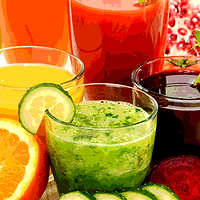What is your role in the juice industry?
I serve as the technical director for the Juice Products Association (JPA), the trade association representing the fruit and juice products industry. JPA’s membership includes processors, packers, extractors, brokers, and marketers of fruit or vegetable juices, drinks, or bases, as well as industry suppliers and food testing laboratories. Our manufacturers represent over 80 percent of the U.S. volume of juice and fruit beverage production, plus companies in Mexico, China, and Latin America.
Why are food safety regulations important for the juice industry?
As with any natural fruit and vegetable product, there are health risks if juice is not processed, packaged, and transported safely. Juice must be pasteurized or otherwise treated to destroy any harmful bacteria. In the past, there were reports of outbreaks of foodborne illnesses traced to drinking juices that had not been treated to kill harmful bacteria. This led to the implementation of regulations such as Juice Hazard Analysis and Critical Control Points (HACCP) to ensure safety in juice products. Today, the juice industry is one of the most closely regulated industries for food safety.
What is the process for making juice?
The process involves three basic steps. First, the fruits or vegetables are washed carefully. Then, the juice is extracted by pressing the produce. Finally, the juice is typically heat-pasteurized for food safety. This process involves the application of heat to eradicate any contaminating bacteria. Some juices are alternatively made using high pressure processing or HPP. This is a cold pasteurization technique, where sealed and packaged products are subjected to a high level of isostatic pressure. This process helps eliminate a variety of pathogens in food and can help extend shelf life.
Could you describe the safety measures to which the juice industry adheres?
From the farm to your refrigerator, safety is the top priority for juice companies. All juices sold in the U.S., regardless of the country of origin, must adhere to the same strict safety regulations. Juice safety measures include:
HACCP
The juice industry is one of three industries overseen by the U.S. Food and Drug Administration (FDA)’s HACCP regulations. The seafood and dairy industries are also regulated under HACCP. Juice HACCP was put into effect in 2002. All juice-processing facilities must comply with HACCP, and such facilities are regularly inspected by federal and state agencies. In addition, juice imported into the U.S. for consumption must be processed to comply with the Juice HACCP regulation or be imported from a country with a Memorandum of Understanding with the United States that covers juice.
HACCP is a key FDA-regulated safety measure for the production of juice, addressing “the analysis and control of biological, chemical, and physical hazards from raw material production, procurement, and handling to manufacturing, distribution, and consumption of the finished product.”
Food Safety Modernization Act
The FDA Food Safety Modernization Act (FSMA) promotes a proactive and preventive approach to ensuring food safety, outlining clear and specific actions that must be taken throughout the supply chain to prevent foodborne illnesses and contamination. FSMA was enacted in response to dramatic changes in the global food system and a greater understanding of foodborne illness as both a public health problem and an economic threat.
FDA has finalized seven major rules to implement FSMA. These include the accreditation of third-party certification bodies to conduct food safety audits, the performance of risk-based activities to verify that food imports meet U.S. safety standards, and the establishment of science-based minimum standards for the safe growing, harvesting, packing, and holding of fruits and vegetables. Since FDA has previously established preventive control-type regulations for juices based on HACCP, the agency has exempted juice from several of the FSMA provisions. Juice processors comply with other FSMA regulations, as required, to ensure that their products are safe for consumption.
Total Diet Study
To further ensure the safety of food and beverages, FDA also monitors levels of about 800 contaminants and nutrients in the average American diet as part of its Total Diet Study. Due to shifting eating patterns over time, the list of tested foods is updated about every 10 years. The study involves buying, preparing, and analyzing about 280 foods and beverages from areas across the country, four times a year.
These findings are then used to identify dietary trends, suggest potential areas of focus for FDA’s food safety and nutrition programs, and guide the development of interventions to minimize risks when necessary. In addition to abiding by FDA’s regulations, juice producers also conduct routine testing of their own to ensure quality control and safety of their products.
Pesticide Regulation
Pesticides are widely used to control pests such as insects, weeds, and plant diseases on many crops. The U.S. Environmental Protection Agency (EPA) sets tolerances for pesticide levels in food based on scientific risk assessments for consumers of all ages. These tolerances reflect EPA’s determination that a pesticide can be used with “reasonable certainty of no harm.”
EPA continuously evaluates new and existing pesticides and works to improve the safety standards related to pesticide residues on food. Juice companies are compliant with all EPA guidelines. As an additional preventive measure, juice producers source their produce from farms that comply with safe pesticide use. Fruits and vegetables are also thoroughly washed as the first step in creating juice.
The United States Department of Agriculture’s Agricultural Marketing Service also monitors pesticide residues in a variety of domestic and imported foods, including fresh and processed fruits and vegetables, as part of the agency’s Pesticide Data Program (PDP). EPA uses the PDP data to conduct dietary risk assessments. In addition, the data are used to ensure pesticide residues are at safe levels and adverse health effects are unlikely. The results of the annual PDP are also shared with FDA.
How has the JPA supported food safety for the industry?
Like many products, juice is transported in bulk by tankers. For many years, however, there were no industry standards for the cleaning of tankers used to transport juice. In some cases, transporters would be audited by multiple companies based on different guidelines. This not only caused confusion for transporters and juice producers, it was also costly.
Recognizing the need to establish a standard cleaning protocol for tankers hauling juice and juice products, the juice industry developed the “Model Tanker Wash Guidelines for the Fruit Juice Industry” in 2002.[1] These guidelines are voluntary and assist the industry in maintaining the sanitation and safety of products during transport. Currently, there are 45 tanker wash facilities that participate in the program. These wash facilities are located in the United States, Canada, and Mexico.
The JPA also routinely shares information including federal regulatory and legislative notices with its members to keep them abreast of current rulemaking activities, regulations, policies, and guidance. The association additionally develops resources and best practices to help companies adhere to safety guidelines (see “Resources and Best Practices”). For example, while 100 percent juice is exempt from certain provisions of FDA’s Current Good Manufacturing Practices and Hazard Analysis and Risk-Based Preventive Controls for Human Food (HARPC) rule because 100 percent juice is subject to Juice HACCP, the JPA has developed model food safety plans to guide companies that manufacture juice beverages with how to comply with the HARPC rule.
Patricia Faison is the technical director of the JPA.
References
1. tankerwash.org/wp-content/uploads/2019/02/JPA-Model-Tanker-Wash-Guidelines-February-2019.pdf.
2. tankerwash.org/tanker-wash-audit-checklist-january-2017/.




